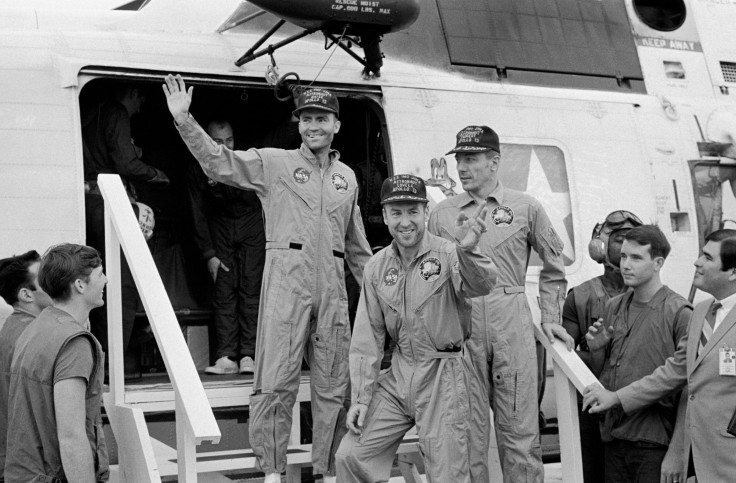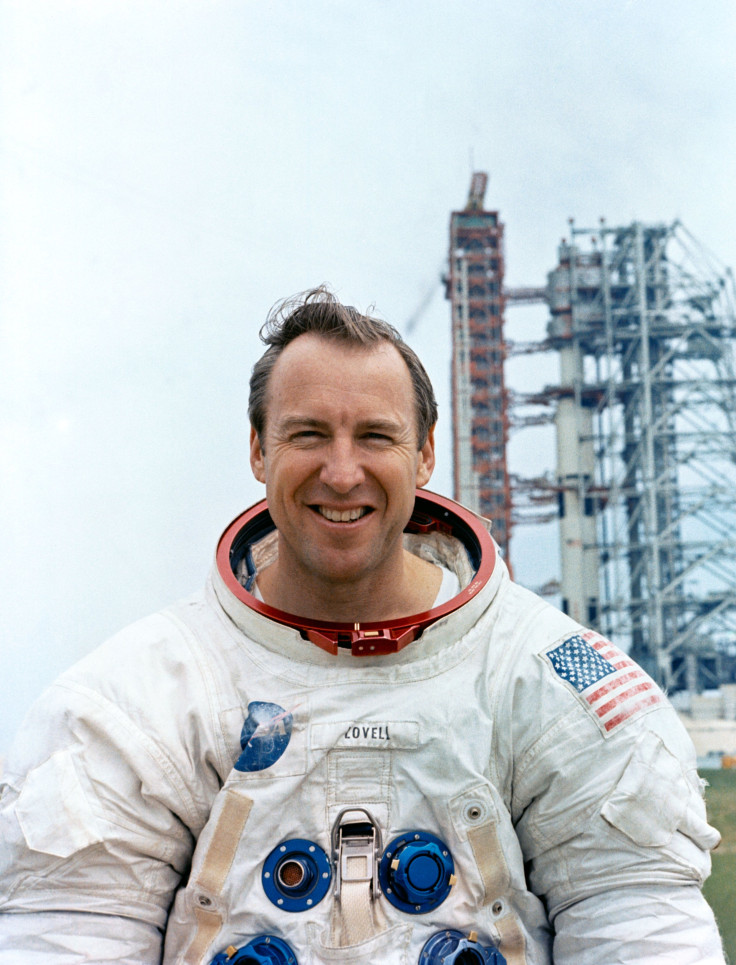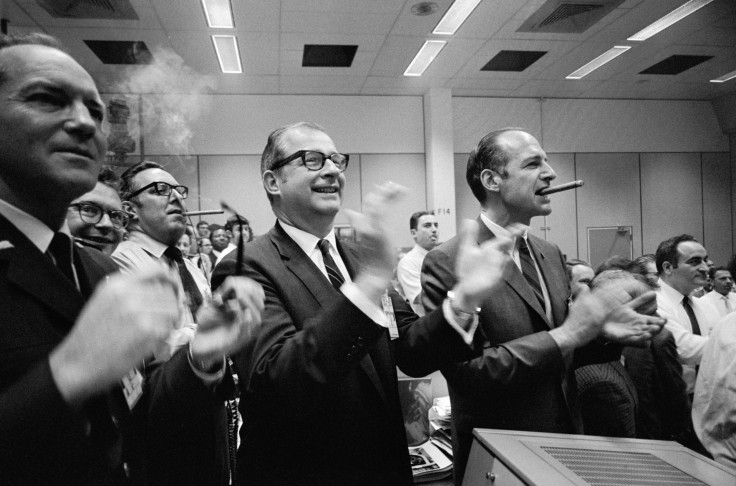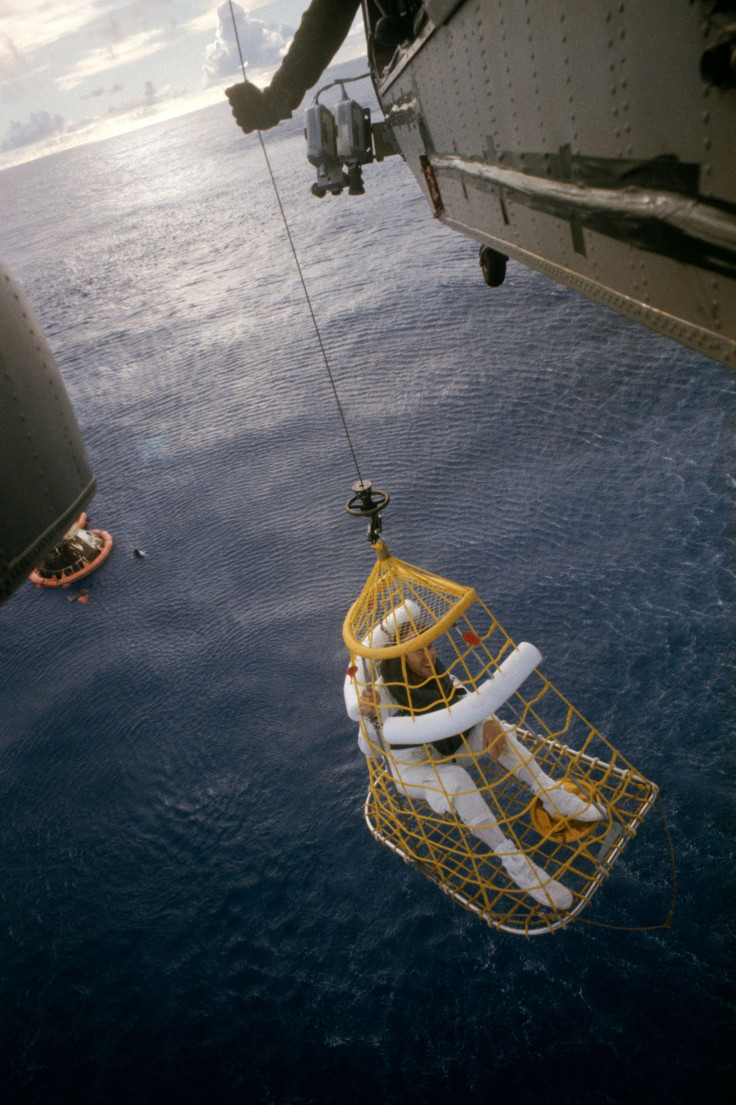Apollo 13 Story: Jim Lovell On How Mission Changed From Moon Landing To Survival

When Capt. James “Jim” Lovell and his fellow NASA astronauts strapped in for the Apollo 13 mission, they were excited about the prospect of putting their hours of preparation, training and experience to work exploring the Fra Mauro area of the Moon. Little did they know 2 1/2 days later, the goal of the mission would change from a moon landing to survival.
The crew, comprised of Lovell, John “Jack” Swigert and Fred Haise, blasted off from the Kennedy Space Center in Cape Canaveral, Florida, on April 11, 1970. Everything was going so well that two days into the trip, NASA’s Joe Kerwin, a capsule communicator at Mission Control, said: “The spacecraft is in real good shape as far as we are concerned. We're bored to tears down here."
But they wouldn’t be bored for much longer.
“Well, the first time we had the explosion we didn’t know what the situation was. We found out the oxygen was escaping and we didn’t have much time,” Lovell told International Business Times.
Read: NASA Photos: 13 Amazing Images From The First Moon Landing

An oxygen tank exploded and took out two of three vital fuel cells in the process. The only place for the Apollo 13 astronauts to go was the lunar module, designed to carry just two men to the surface of the Moon, the command module had to be shut down and preserved for re-entry, NASA said.
But none of them panicked.
“With the training I had, I thought it was possible to handle the problem, and I think we had a good chance,” Lovell said. He was no stranger to space or the challenges that come with it. The Apollo 13 mission was the former Navy test pilot’s fourth NASA mission. He had previously completed two Gemini missions and Apollo 8, which was the first time a crewed rocket left Earth’s orbit.
The module designed for two men and to last only two days ended up holding three men for four days. “Believe it or not those four days were pretty busy. We had things to do to overcome one problem after another,” Lovell said.
They had to figure out how to distribute power, oxygen, water for consuming and for cooling the craft, food and maybe their biggest challenge: getting carbon dioxide out of the module. “We had to overcome each crisis one by one but we finally managed to do it,” Lovell told IBT.
During the four days a key concern was getting the vessel on track to make it back to Earth. Mission Control had to make hurried calculations and instruct the astronauts on the necessary controlled burns they’d need to conduct. Luckily the crew transferred the guidance mechanism from the command module to the lunar module, Lovell said. “We did that with 15 minutes to spare.”

With help from mission control, Lovell oriented the lunar module so it was aligned using the Sun as a navigation star, this was key to cutting the time it took to return to Earth. Once on track, the crew re-entered the command module, which Mission Control had made plans to restart after it spent days in cold sleep. After it was up and running and the astronauts were in it, they finally shed the damaged service module and got ready for re-entry.
“[When we] landed in the Pacific and water came over the window and I realized I wasn’t gonna continue to sink, I felt relieved we were finally able to get back safely,” Lovell said.

That was Lovell's final trip with NASA. Even though he made it to the Moon but never walked on it, he said he never asked for another trip because there were so many astronauts waiting for a turn. “I didn’t feel it would be fair to ask for other flights.”
After his space exploration days were over, he and a friend got together to write a book on the experience years later. Their publisher suggested they bring it to movie production companies. That’s when the story got picked up and eventually turned into the hit film “Apollo 13.”
Lovell said the book and the movie are both highly accurate. “There’s nothing in the book or the movie that was exaggerated or not true,” he said. Even Tom Hanks’ portrayal of him was well done, he said. “It is kind of strange to see yourself on screen portrayed by someone else, but I have all the admiration for Tom Hanks. He did an excellent job."
“When people went to see the movie, they already knew the outcome, and he was able to keep people on the edge of their seat,” Lovell said of the film director Ron Howard.
Monday marks the 47th anniversary of the dramatic return home. NASA held an event in 2015 on the 45th anniversary for the astronauts and those who helped guide them home in 1970.
Lovell who recently celebrated his 89th birthday said he still talks to Fred Haise. “Unfortunately, Jack Swigert, the third member, died way back in '83, so we didn’t have much chance to be with him. Fred and I still talk, we don’t live near each other, but we still talk,” Lovell said. “We get together and talk about old times.”
© Copyright IBTimes 2024. All rights reserved.





















